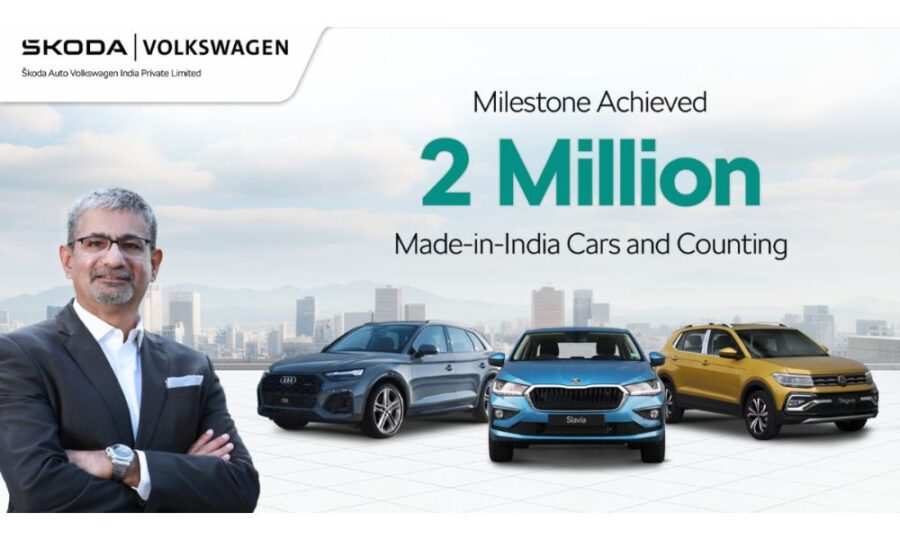Skoda Auto Volkswagen India has achieved a major production milestone. The group has now manufactured over two million cars in the country. It took them 25 years of local manufacturing to achieve this feat, starting all the way back in 2001 with the first India-built Skoda Octavia.
The recent phase has been much quicker. The last five lakh cars came out of the factories in just about three and a half years. A large part of this growth comes from the MQB-A0-IN platform. This is the India-focused architecture that supports cars like the Skoda Kushaq, Slavia, Kylaq, and the Volkswagen Taigun and Virtus.
This platform was created by local engineering teams. They worked around three simple goals:
- Built to stay cost-effective for Indian buyers
- Engineered to handle rough and varied Indian roads
- Flexible enough to support multiple body styles
Because it ticked all three boxes, Skoda and Volkswagen could quickly expand into segments where they previously had little presence.
Strong demand for Skoda and Volkswagen
Both brands have shown significant growth in the last year.
Skoda registered its best-ever ten-month performance with 61,607 units, more than double over last year’s numbers. The Kushaq and Slavia continue to be the mainstays, while the new Kylaq is aiding Skoda in tapping an increased number of first-time buyers in the entry SUV segment.
For Volkswagen, however, the Diwali period was the best it has ever had for the Virtus. The Virtus has managed to take over more than 40 percent share in the premium mid-size sedan category in about 40 months. It competes with the Honda City, Hyundai Verna and Skoda Slavia, but stands out because of its TSI and strong build feel.
SUVs continue to make up a bigger share of the sales mix. With Kushaq, Kylaq and Taigun, the group is covering multiple popular price bands. The sedans Virtus and Slavia still attract buyers who prefer the three-box shape.

Exports and Luxury Brands
Of the two million cars built in India, over seven lakh have been shipped to international markets, including those in Latin America, Africa, Southeast Asia, and the Middle East. This positions India as an important manufacturing hub for the group’s “Made in India, Driven by the World” strategy.
The luxury brands inside the group are also adding to the momentum.
Bentley has placed its India operations under Skoda Auto Volkswagen India and opened new showrooms in Mumbai and Bengaluru. Porsche has gained more than 4,400 customers in the last six years and now has 13 sales locations. Audi also had a good run with the RS Q8 winning Performance Car of the Year and the Audi Approved Plus programme growing steadily. Audi has also supported installation of 6,500+ charging points under the Charge My Audi initiative.
What Comes Next
The two-million mark comes at a time when Indian customers are clearly shifting towards SUVs, petrol engines and connected features. Already Skoda and Volkswagen are aligned with these trends. Their turbo-petrol engines, digital cockpit features, and remote-function technology match what many buyers want now.
A small push also came from the GST rate cuts in September, which reduced prices for many models. The challenge ahead will be sustaining the momentum once that temporary boost settles down. Future progress will depend on updates to existing models, electrification, ADAS features, and modern software systems that are becoming increasingly competitive in the Indian market.
Conclusion
The two-million production milestone shows how much the group has changed its strategy in India. Local engineering, flexible platforms, and stronger demand have played their part. The next phase depends on how quickly Skoda and Volkswagen can update line-ups and head towards electric and tech-heavy cars. For now, it’s a moment of steady progress and a clear sign that their long-term plan for India is working.

